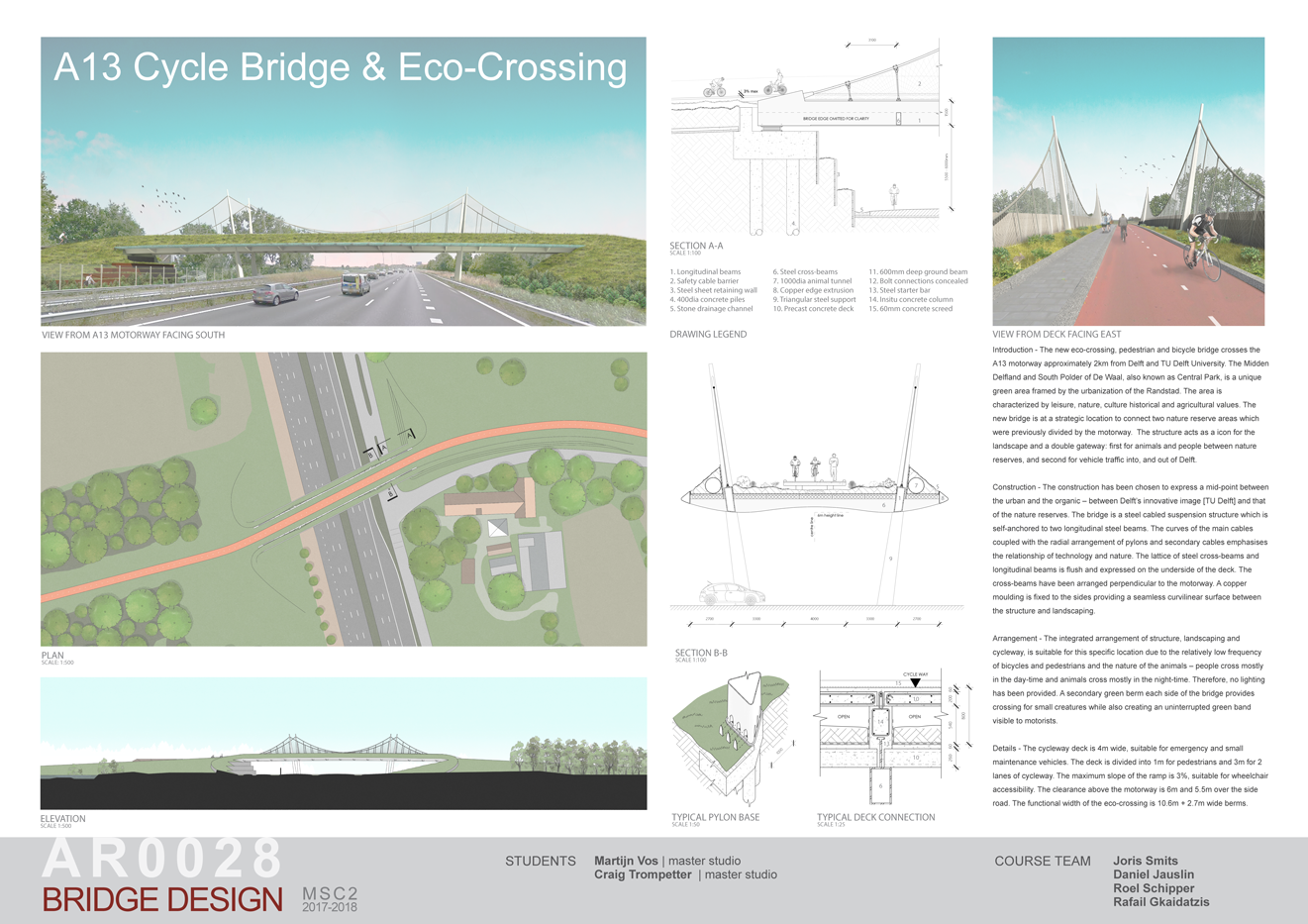| Year: | 2018 |
| Tools: | Rhinoceros, Grashopper, Adobe CS |
| Fields: | Architectural Engineering, Nature-Based Architecture |
| Team: | Martijn Vos, Craig Trompetter |
We designed this bridge and nature crossing over the motorway A13 in the Netherlands for a master course in the Architecture Program. The bridge is situated in a location where the motorway divides two adjacent nature reserves. The Midden Delfland and South Polder of De Waal, also known as Central Park, is a unique green area framed by the urbanization of the Randstad. The area is characterized by leisure, nature, culture historical and agricultural values. How to combine this human usage requirement and usage by small mammals in one object?
About the project
Construction - The construction has been chosen to express a mid-point between the urban and the organic – between Delft’s innovative image [TU Delft] and that of the nature reserves. The bridge is a steel cabled suspension structure which is self-anchored to two longitudinal steel beams. The curves of the main cables coupled with the radial arrangement of pylons and secondary cables emphasises the relationship of technology and nature. The lattice of steel cross-beams and longitudinal beams is flush and expressed on the underside of the deck. The cross-beams have been arranged perpendicular to the motorway. A copper moulding is fixed to the sides providing a seamless curvilinear surface between the structure and landscaping.
Arrangement - The integrated arrangement of structure, landscaping and cycleway, is suitable for this specific location due to the relatively low frequency of bicycles and pedestrians and the nature of the animals – people cross mostly in the day-time and animals cross mostly in the night-time. Therefore, no lighting has been provided. A secondary green berm each side of the bridge provides crossing for small creatures while also creating an uninterrupted green band visible to motorists.
